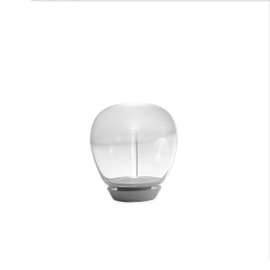Previous
Design discourse: management, design, Italy


Your dream house is one step away from you.
Subscribe to our newsletter and get 10% off orders of at least £100,00!
Enjoy it and don’t miss out on our offers and updates.


I’ve spent the last couple of days reading articles, essays and interviews about Artemide. Light as a multifaceted, captivating entity: technological and aesthetics research, big projects and IoT (Internet of Things) designs accessible to all.
Everything helped to fill out the profile of a firm which looks to the future, but to picture where this long trajectory was going, I need to go back and to dig up the brand's history, to focus on what happened before Tolomeo, before the eighties.
But with past events and notes under my nose, I started thinking that possibly the best way to learn about Artemide wouldn’t be to look back but to look forward. So, as I kicked my feet into a pair of sixties’ loafers, the thought occurred to me, would Artemide have been a start-up?
The problem of finding a universal definition of start-up (hyphenated with the present meaning) is being debated pretty much everywhere online. Typing start-up generates approx 278.000 results on Google – and every result appears to give a different answer. However, it’s possible to draw some boundaries: I would say that you have to have a couple of founding members, a mission statement, a vision, innovation, growth and scalability – essential criteria on the West Coast.
According these criteria, Artemide should be described as a firm set up in 1960 by Ernesto Gismondi and Sergio Mazza, an engineer and a designer respectively, both just over twenty-eight years old. Two strong characters, different backgrounds, a shared vision: bring a revolution to lighting design.
And truly, like a start-up, this didn’t take much time: already in ‘65 Vico Magistretti was designing Eclisse for Artemide, which was awarded the Compasso d’Oro two years later and - because of its conceptual value - it became an iconic piece both for the brand and Italian design as a whole.
Tizio by Richard Sapper came a couple of years later in ‘72. The perfect union of Ernesto and Sergio’s characters, if we were describing the conditions for a start-up: first of all, aesthetics-based design for a structure which relies on levers and loads, and secondly, mounting a halogen light-bulb, the first time ever for a home lamp. Innovation was always there with Artemide.
So, Artemide continues to reap successes – and patents, just like a start-up – and in 1980 it opened it’s American branch. In 1987, Artemide wrote a chapter of design history with Tolomeo by Michele De Lucchi and Giancarlo Fassina, and established itself firmly abroad. A scalable brand – just like a start-up from California – which now sells its products in 98 different counties.



Artemide has shown us that it has an extraordinary, really unique, talent: to be constantly reinventing itself. In 1996, the brand endorsed a revolutionary and authoritative manifesto: with the motto The Human Light, Artemide renounces Tolomeo, placing mankind back at the centre of lighting design. Or rather, lighting design at the service of mankind.

The story behind Artemide and its products has been told by the iconic Magnum photographer Elliott Erwitt – known for his portraits of Che Guevara, Jackie Kennedy and Marilyn Monroe – and now by Pierpaolo Ferrari, who with Maurizio Cattelan set up the magazine Toilet Paper. The artist focuses on bringing out the character of each Artemide lamp using bold and colourful images. This means having the potential to grow.
I came to this conclusion after reading all those 278.000 results: a start-up is a small business with the drive to grow and transform the whole field in which it operates. This description is simple, perhaps a little narrow but it’s not wrong. And, it’s definitely Artemide.



Artemide
Michele De Lucchi
Lighting
Made in Italy icon
A neutral palette for multicolor effects
Ernesto Gismondi
Karim Rashid
Carlotta de Bevilacqua

 Back to
Back to
Size*
Quantity*




